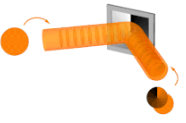Spatial light modulator
A spatial light modulator is a gadget that can vary the properties of light that goes through it or reflects off of it. It can modulate the intensity and/or phase of light across a two-dimensional physical array. It can be used for computer-generated holography.
Technologies for spatial light modulators include DMD and LCOS.
Companies that make spatial light modulators include Texas Instruments, HoloEye, and Meadowlark optics.[1]
Spatial light modulators are related to microdisplays.
SLMs can either be amplitude modulation SLMs or phase modulation SLMs, typically.
LCOS SLMs can theoretically modulate amplitude, polarization, and phase all at once.[2]
Modulation[edit]
Amplitude modulation is a kind of modulation of light.
It is used by some kinds of SLMs, for example DMDs.
Commercially available SLMs[edit]
See also[edit]
References[edit]
- ↑ "1024 x 1024 Spatial Light Modulator". 2024-11-20. https://www.meadowlark.com/shop/slms/1024-x-1024-spatial-light-modulator/.
- ↑ "LCOS Microdisplays". 2020-11-09. http://holoeyesystems.com/lcos-microdisplays/.
- ↑ Paschotta, Dr. Rüdiger (2025-02-05). "Where to buy spatial light modulators; SLM, liquid crystal, MEMS, optical computing, holography, manufacturers and suppliers". https://www.rp-photonics.com/bg/buy_spatial_light_modulators.html.
- ↑ "Home". 2024-09-22. https://swave.io/.
- ↑ "Spatial Light Modulators". 2024-08-01. https://www.meadowlark.com/spatial-light-modulators/.
